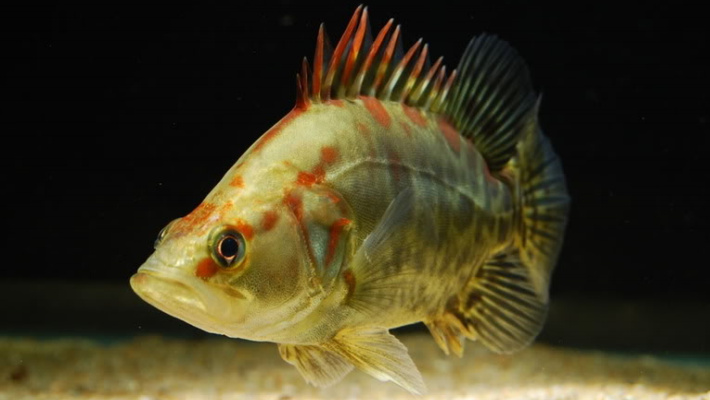|
Fermentation
allows to improve significantly nutritional value of wheat, rye, rice, oat and
other cereal brans expanding an area of their use in nutrition of human, in
particular in baking industry, and animals. In our context, fermented baits and
groundbaits are widely used in fishing. Here, we consider briefly some examples
and per se practical recipes of
wheat, rice and other cereal brans fermentation that will allow you to get the
first glimpse of the state of affairs in this important area.
Unhygienic methods of cereal bran
fermentation are not considered.
Proximate
composition, mineral content and antinutritional factors (tannin, phytic acid) are determined in fermented (with the 0,2 % dry
yeast plus 30 ppm ascorbic acid) wheat bran by Hassan et al. (2008). Fermentation of moistured wheat bran
in an incubator at 30o C for 4 hours increases the percentage of crude fiber from 15,67 to 18,67;
15,67 to 18,00; 15,00 to 17,67 for coarse, medium and fine brans. At the same
time, protein content is increased from 20,35 to 21,65; 18,36 to 20,79 and
21,07 to 22,40 for wheat bran with the foregoing particle size, respectively. Carbohydrates
percentage increases from 45,09 to 47,40 in fermented coarse wheat bran. Both
antinutritional factors (tannins and phytic acid) are found to decrease
significantly in coarse, medium and fine wheat bran. Functional properties of cereal
brans fermented by Aspergillus oryzae
and Rhizopus sp. in the solid-state
system are determined by Silveira & Badiale-Furlong
(2009) with an aim to evaluate their application in food formulation. The
defatted rice bran and wheat bran have been inoculated with the spores of the
cultures and incubated at 30°C for zero, 24, 48 and 72 hours. Protein content,
protein solubility, in-vitro
digestibility, gelation and water holding capacity have been determined in bran
with or without fermentation. Rhizopus
sp. increases significantly the protein content
(69,0 % and 56,0 % for the defatted rice bran and wheat bran, respectively),
protein solubility (28,5 % and 36,2 %) as well as water holding capacity (11,4 %
for wheat bran).
Other aspects
of rice bran fermentation are considered in many papers (e.g., Oliveira et al.,
2011; Kupski et al., 2012).
Oduguwa et al. (2008) have
carried out experiments to evaluate the effect of fermentation on the composition
of corn cob, rice bran and cowpea (Vigna
sp.) husk to use them in composite rabbit feed formulations. The test
ingredients have been moistened with the tap water and allowed to ferment
naturally at room temperature during zero, 24 and 48 hours. The
microorganisms associated with the fermenting materials are identified as Rhizopus
oligosporus, Aspergillus oryzae, Aspergillus niger,
Rhodotorula, Geotrichum candidum, Candida albicans
and Saccharomyces cerevisiae. According to Odugawa et al. (2008), S.
cerevisiae enhance the protein and fat contents in the fermented materials
while R. oligosporus are able to degrade the fiber significantly.
Basic References
Hassan
E.G., Award Alkareem A.M., Mustafa A.M.I. 2008. Effect of fermentation and
particle size of wheat bran on the antinutritional factors and bread quality. Pakistan Journal of Nutrition 7, 521-526
Kupski
L., Cipolatti E., da Rocha M., Oliveira M.S., de Souza-Soares L.A.,
Badiale-Furlong E. 2012. Solid-state fermentation for the enrichment and extraction of proteins
and antioxidant compounds in rice bran by Rhizopus
oryzae. Brazilian Archives of Boilogy and Technology 55, 937-942
Oduguwa O.O., Edema M.O., Ayeni
A.O. 2008. Physico-chemical and microbiological analyses of fermented corn
cob, rice bran and cowpea husk for use in composite rabbit feed. Bioresource Technology 99, 1816-1820
Oliveira M.S., Feddern V., Kupski L., Cipolatti E.P.,
Badiale-Furlong E., de Souza-Soares L.A. 2011. Changes in lipid, fatty acids
and phospholipids composition of whole rice bran after solid-state fungal
fermentation. Bioresource Technology 102, 8335-8338
Silveira C.M.,
Badiale-Furlong E. 2009. Sperathe
effects of solid-state fermentation in the functional properties of defatted
rice bran and wheat bran. Brazilian
Archives of Boilogy and Technology 52, 1555-1562
|








 SUBSCRIBE
SUBSCRIBE


